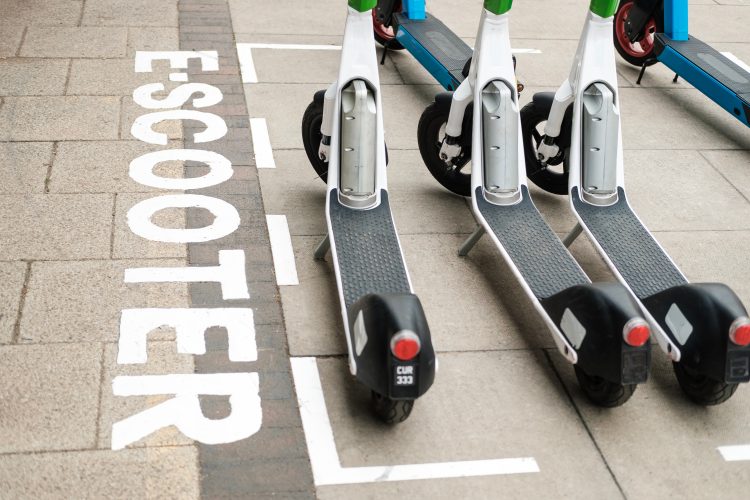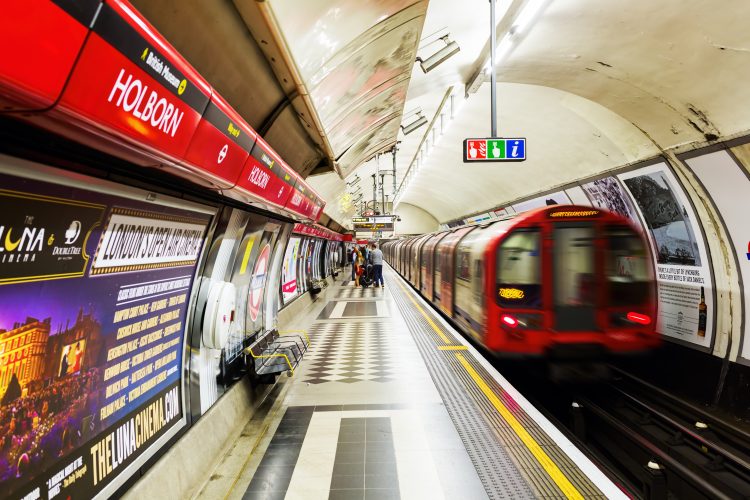Can micromobility help get people back on transport in London?
- Like
- Digg
- Del
- Tumblr
- VKontakte
- Buffer
- Love This
- Odnoklassniki
- Meneame
- Blogger
- Amazon
- Yahoo Mail
- Gmail
- AOL
- Newsvine
- HackerNews
- Evernote
- MySpace
- Mail.ru
- Viadeo
- Line
- Comments
- Yummly
- SMS
- Viber
- Telegram
- Subscribe
- Skype
- Facebook Messenger
- Kakao
- LiveJournal
- Yammer
- Edgar
- Fintel
- Mix
- Instapaper
- Copy Link
Posted: 3 September 2021 | Josh Cottell - Centre for London | No comments yet
Is micromobility the solution to getting people back on public transport in London? Josh Cottell, Research Manager at Centre for London, investigates…


The COVID-19 pandemic has led to a significant shift in how people move around cities. In London, public transport use fell dramatically and has since increased gradually; fewer than half the number of trips were taken in July 2021 as in the same period in 2019. While people took fewer trips by public transport, they took more trips by private transport, walking and cycling.
There is a considerable risk that these changes persist to some degree in the coming years. If they do, the gradual shift in how people travel in cities like London, away from privately owned cars and towards using public transport, walking, and cycling, will have taken a big step backwards. This is important, because these modes of travel are better for the environment and for residents’ health than travelling by privately owned cars or taxi.
Transport contributes a quarter of London’s CO₂ emissions so will play a vital role in achieving the Mayor of London’s target for the city to reach net-zero carbon emissions by 2030. Reducing carbon emissions in the city will involve encouraging Londoners back onto public transport while making use of the recent increase in active travel.
Working in tandem with traditional transport
As case rates of the virus fall, one way that people can be supported back onto public transport is by improving their access to cycling as well as other small vehicles such as e-bikes and e-scooters. Together termed ‘micromobility,’ these modes of travel can enable people to travel further locally. Placing high quality infrastructure such as parking for micromobility around transport hubs could provide travellers with access to a wider range of journeys.
Many people already use micromobility and public transport in tandem, with two thirds (67 per cent) of journey stages in London made by walking, cycling, or public transport and potentially involving two or more different kinds of transport.
Technological advances in batteries, small motors, satellite navigation and smartphones have brought about wider, more affordable access to small micromobility vehicles such as e-bikes and e-scooters. Privately owned e-scooters currently remain illegal to use on public land in the UK, but England currently has several shared e-scooter trials, including one in London.


Empty tube platform have been an all too common sight in London recently
Use of shared e-scooters is legal as part of the trials when run by participating companies, subject to restrictions on speed, geographical area and parking. One estimate suggests that 10 per cent of people in the UK lived in an area with access to a trial by July 2021. These trials illustrate the growing variety in the kinds of micromobility vehicle that people can use other than conventional pedal cycles and will provide a valuable opportunity to learn how best to integrate shared micromobility with other kinds of transport.
Building confidence in micromobility
At present, too few people can feel confident using micromobility in cities. A lack of safe cycle lanes separated from traffic and secure or well-lit parking for their bike or scooter at home or out and about are barriers that many people face to riding, especially in less densely populated parts of cities. Even in a city like London, many people have low access to sustainable modes of travel. People who live further from the city centre are much less likely to have access to both micromobility and public transport. According to Transport for London, one in three Londoners live in an area with low public transport access level (PTAL).
A network of well-designed cycle lanes linking residential areas with transport hubs, where safe, secure, and well-lit parking is provided, could enable more people to choose to travel via a mix of micromobility and public transport, rather than by private car or taxi. Someone who lives too far away from their closest train or underground station to walk might be able to ride the distance on a bike, e-bike, or e-scooter relatively quickly.
Shared micromobility, which allows riders to rent a bike, e-bike, or e-scooter for short periods of time at a relatively low cost can also enable more people to travel in this way. Hiring a shared vehicle could also be a route into riding a bike or scooter, introducing micromobility to people who haven’t tried it without the financial or time commitment of purchasing hardware.
As well as safe and secure parking for privately owned micromobility vehicles, shared modes should be available to pick up from stations too. Parking for both types could be co-located to save space and make it easier to access.
Accessible, affordable, and easy to use micromobility, both shared and private, could help to extend the distances that people can travel sustainably, and open up a wider range of journeys from public transport hubs.
Josh Cottell is a Research Manager at Centre for London. He joined the Centre in 2021 and is responsible for managing research projects on a range of topics. Before joining Centre for London, he worked at the Education Policy Institute where his research focused on the availability and quality of education and childcare for young children.
Related topics
Accessibility, Air Quality, Multimodality, On-Demand Transport, Passenger Accessibility, Passenger Experience, Public Transport, Sustainable Urban Transport, Transport Governance & Policy
Related modes
Bikes & Scooters
Related organisations
Centre for London, Transport for London (TfL)
Related people
Sadiq Khan







